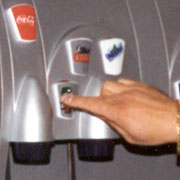Woolly mammoth prototypes! Materials and Polymer Engineers are working with Scientists, Doctors and Surgeons who are saving, extending and improving lives using three dimensional (3D) printing and or rapid prototype (RP) machines for tissue generation. These efforts often involve living prototypes, where layers of living cells are deposited onto a skeleton matrix to form 3D structures, aimed at regenerating transplant organs and tissues such as a whole heart or lung.
Industrial Designers use RP with non living materials. Processes include; (SLA) or stereolithography, (FDM) Fusion Deposit Modeling and (SLS) Stereo Laser Sintering. All three are additive build, rapid prototyping processes using thermal or photon reactive polymer resins or metals, which build a part or assembly microscopic layer by layer. First, you must create a virtual 3D CAD model of the part you want to reproduce. This may involve a 3D scan of a physical model to be constructed based on the associated missing part or parts of a human being. Like an artificial leg attached to an amputated leg. That model data is converted to a CAD file based on the structural or organic needs, for the RP geometric part assembly build process. This includes producing RP parts that extend or complete or functionally perform for or are surgically implanted in people. The mind – controlled wireless prototype machine interface is one of the missing links. Think robotic legs, the Electrical Engineers say if we can do wired, we can do wireless.
In the healthcare applications, the issue is working with complex organisms internally such as animals or humans, these independent organisms have a kind of a life force which knows foreign friends from foes. These organic systems have some intelligent power or physical markers that know how to recognize, reject or attack a foreign cell or organism or material within its system. Today, many patients have pig organs or parts and other clinically grown materials that with anti-rejection drug intervention are able to stay alive and sustain their new organ parts for a long period of time. Medically, the drugs are used to suppress the rejection or immune system reaction. Which left to natural course, the host body eventually rejects the implanted or attached parasite. Advanced medicine now has efforts to use the recipient’s DNA within the 3D printers build material. This makes for the possibility that an organism can be prototyped outside of the body, which once implanted it is identified as part of the body and not rejected. These living prototypes represent a leap forward in regenerative medicine. There are also efforts to possibly reconstruct a Woolly mammoth using the fossil’s reconstituted DNA. Of course, there are a lot of missing steps, like MOM. More and more food we consume is processed synthetic organic fibers that look and taste like the real thing. It started out as a prototype in a cup, with artifical flavor and odor added, then ramped up in production. Soylent green, Yummy.
Welcome to our future planet, Bones and Designers can make, repair or prototype almost anything!

